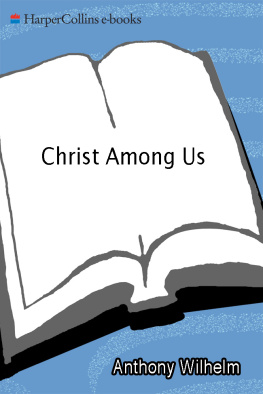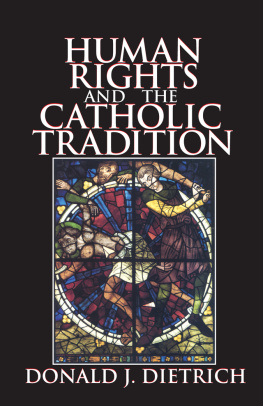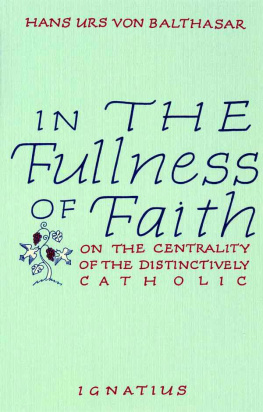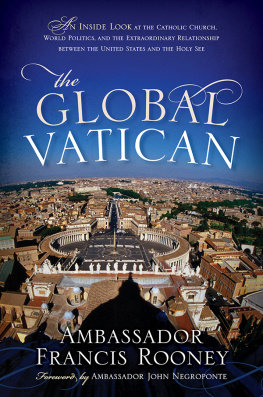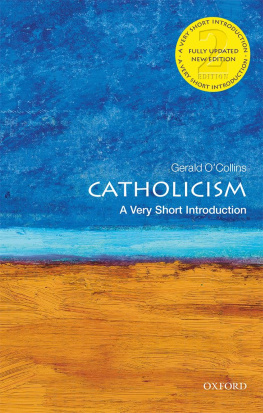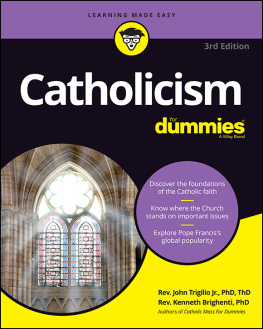James Chappel - Catholic modern the challenge of totalitarianism and the remaking of the Church
Here you can read online James Chappel - Catholic modern the challenge of totalitarianism and the remaking of the Church full text of the book (entire story) in english for free. Download pdf and epub, get meaning, cover and reviews about this ebook. City: Europe, year: 2018, publisher: Harvard University Press, genre: Politics. Description of the work, (preface) as well as reviews are available. Best literature library LitArk.com created for fans of good reading and offers a wide selection of genres:
Romance novel
Science fiction
Adventure
Detective
Science
History
Home and family
Prose
Art
Politics
Computer
Non-fiction
Religion
Business
Children
Humor
Choose a favorite category and find really read worthwhile books. Enjoy immersion in the world of imagination, feel the emotions of the characters or learn something new for yourself, make an fascinating discovery.

- Book:Catholic modern the challenge of totalitarianism and the remaking of the Church
- Author:
- Publisher:Harvard University Press
- Genre:
- Year:2018
- City:Europe
- Rating:3 / 5
- Favourites:Add to favourites
- Your mark:
Catholic modern the challenge of totalitarianism and the remaking of the Church: summary, description and annotation
We offer to read an annotation, description, summary or preface (depends on what the author of the book "Catholic modern the challenge of totalitarianism and the remaking of the Church" wrote himself). If you haven't found the necessary information about the book — write in the comments, we will try to find it.
In 1900 the Catholic Church stood staunchly against human rights, religious freedom, and the secular state. According to the Catholic view, modern concepts like these, unleashed by the French Revolution, had been a disaster. Yet by the 1960s, those positions were reversed. How did this happen? Why, and when, did the worlds largest religious organization become modern? James Chappel finds an answer in the shattering experiences of the 1930s. Faced with the rise of Nazism and Communism, European Catholics scrambled to rethink their Church and their faith. Simple opposition to modernity was no longer an option. The question was how to be modern. These were life and death questions, as Catholics struggled to keep Church doors open without compromising their core values. Although many Catholics collaborated with fascism, a few collaborated with Communists in the Resistance. Both strategies required novel approaches to race, sex, the family, the economy, and the state. Catholic Modern tells the story of how these radical ideas emerged in the 1930s and exercised enormous influence after World War II. Most remarkably, a group of modern Catholics planned and led a new political movement called Christian Democracy, which transformed European culture, social policy, and integration. Others emerged as left-wing dissidents, while yet others began to organize around issues of abortion and gay marriage. Catholics had come to accept modernity, but they still disagreed over its proper form. The debates on this question have shaped Europes recent past--and will shape its future. Read more...
Abstract: In 1900 the Catholic Church stood staunchly against human rights, religious freedom, and the secular state-disastrous concepts unleashed by the French Revolution. Yet by the 1960s its position was reversed. How did the worlds largest religious organization become modern? James Chappel finds answers in the shattering experiences of the 1930s. Read more...
James Chappel: author's other books
Who wrote Catholic modern the challenge of totalitarianism and the remaking of the Church? Find out the surname, the name of the author of the book and a list of all author's works by series.

